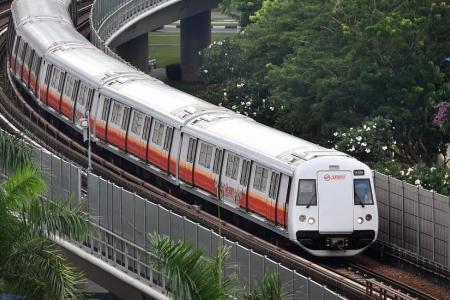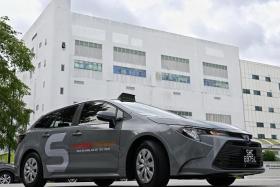MRT network improves in first three quarters
The Republic's rail network continued to improve in the first nine months of 2019, with train-km between delays breaching the one million mark.
On the whole, in the first three quarters of this year, the MRT system clocked 1.08 million train-km between delays of more than five minutes. This is up from the 955,000 train-km seen in the first six months of 2019.
The latest 12-month moving average from the Land Transport Authority (LTA) showed the oldest line - which was extensively renewed in recent years - posting the best results.
The three-decade-old North South Line clocked more than 1.43 million train-km between delays, down slightly from 1.44 million train-km in the first six months.
The runner-up was the North East Line (NEL) with 1.38 million train-km between delays, down drastically from 4.14 million train-km in the first half.
The Straits Times understands that because the NEL is a shorter line, even a single incident affects its performance.
The East West Line was third with 1.05 million train-km covered between delays, up significantly from 693,000 train-km. Newer lines - Circle and Downtown - came in with 900,000 plus train-km between delays.
The Circle Line showed an improvement from 606,000 train-km at the six-month mark, while the Downtown Line slipped from 1.15 million train-km.
Three major delays occurred on the entire rail network in the first three quarters, compared with nine for the whole of last year.
The LRT network clocked 128,000 car-km between delays, a dip from 130,000 car-km seen in the first half.
Singapore University of Social Sciences transport economist Walter Theseira said that while the mean-kilometre before failure (MKBF) is an accepted measure of reliability, Singapore could look at more holistic measures.
"There are some internationally measured indicators of reliability beyond MKBF, such as delay-minutes. Those could be useful because they capture the human impact of disruptions and are scaled according to how many peoples journeys they affect and for how long," he said.
"In the local context, train crowding and having to wait for the next train are service quality issues that people feel strongly about."
Get The New Paper on your phone with the free TNP app. Download from the Apple App Store or Google Play Store now



